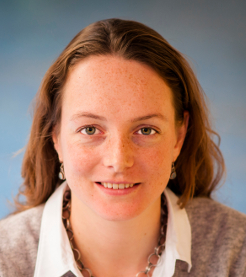 |
|
Measure Theoretic probabilityFall 2016LecturerSonja Cox (Personal page UvA) (Home page) Email: s.g.cox AT uva.nl |

|
From September 21st up to (and including) November 2nd:
Kirsten Wang (k.j.l.wang AT uva.nl)
From November 3rd onwards:
Alisa Kirichenko (a.kirichenko AT uva.nl)
To provide an introduction to the basic notions and results of measure theory and how these are used in probability theory.
The course is essentially self-contained, but the measure-theoretical basics (sigma-algebra, measurable space, Dynkin's lemma, Caratheodory's extension theorem, measurable functions, Lebesgue measure and -integral) are explained only very briefly. A student who is unfamiliar with this concepts will need to invest some extra time to succesfully complete the course.
The schedule for the homework assignments can be found below (exercises are in lecture notes). (Part of) the homework will be graded, the average grade may raise (but not lower) the final grade. See also Exam below.
A bonus on the exam can be earned by presenting one part of these miniprojects in the exercise class. Sign up for a miniproject in class or by mailing one of the teaching assistants. You will get a grade for your presentation (integer between 0 and 6) that will count as a bonus for your final grade. See also Exam below. Details will be explained in the first lecture.
| Lecture date | Material covered | Presenting students | Exercises assigned | Exercises due on | Solutions |
|---|---|---|---|---|---|
| 14-09 | Ch. 1 | Not applicable | 1.1, 1.6, 1.11 | 21-09 (14:00) | Solutions |
| 21-09 | Sec. 3.1, 3.2, 3.3 | Fabian, and Jolien (UvA) | 2.6, 3.10, 3.12 (typo in 3.10 regarding calligraphic F, see link.) | 28-09 (14:00) | Solutions |
| 28-09 | Sec. 4.1, 4.2 | Mark vd B., Lianne vd V. (UL), Benthen Z. | 4.2, 4.6, 4.7 | 05-10 (14:00) | Solutions |
| 05-10 | Sec. 4.3, 4.4, 4.7 | S. Franssen, L. Maxim | 4.9, 4.10, 4.11 | 12-10 (14:00) | Solutions |
| 12-10 | Sec. 5.1, 5.2 | Wessel M., Bastiaan F., Abdel B.(UvA?) | 5.2, 5.4, and read appendix A. | 19-10 (14:00) | Solutions |
| 19-10 | Sec. 6.1, 6.2, 6.3 | Gideon J., Ismani N., Sjoerd J.(UvA) | 6.4, 6.5, 6.9 | 26-10 (14:00) | Solutions |
| 26-10 | Sec. 8.1 | Wen W., Dechao W.(UvA) | 8.2, 8.3, 8.9 | 02-11 (14:00) | Solutions |
| 02-11 | Sec. 9.1, 9.2 | Just B., Javier S., Dafni M. | 9.4, 9.6, 9.8 (read Thm 9.15), 9.9 | 09-11 (14:00) | Solutions |
| 09-11 | Sec. 9.3, 9.4, 10.1 | Ardjen P., Daphne v L., Hamza A. | 9.10, 9.14, 10.5 | 16-11 (14:00) | Solutions |
| 16-11 | 7.2, 10.2 | Joost O., Hui Z., Audrius J. | 7.14, 10.7, 10.8. | 23-11 (14:00) | Solutions |
| 23-11 | 10.4, Def. 12.1, Prop. 12.2, Cor. 12.5 | Jens K., Tammo H., Muriel P. | 10.11, 12.1, 12.4 | 30-11 (14:00) | Solutions |
| 30-11 | 12.2 | Bert t B., Rens K., Machiel Telling | 12.11, 12.12 | 07-12 (14:00) | Solutions |
| 07-12 | 13.1, 13.2 | Giovanni P., Camilla T., Caroline U. | 13.8, 13.9 | 14-12 (14:00) | Solutions |
| 14-12 | 14.5, exam 2015, resit 2015, last year's exam and last year's resit | Marieke vd W., Sophie H., Jori H., Shahzeb, Jules C., Rajesh M., Mathijs de L. Jurriaan P. | No homework | ||
| January 9th, 15:00-17:00, G2.10, January 27th, 13:00-15:00, G3.10 | Questions regarding the exam |
)* Tentative program, will be updated after the lecture.
The list of `intended learning outcomes' (i.e., what you need to be able to do at the exam) can be found here (same list as in announcements). The course provides the necessary background for follow up courses like Stochastic Processes, Stochastic Differential Equations and Stochastic Integration.
See here.
At the end of the course there will be a written examination (for details, see announcements).
The final mark (F) is determined as
F = min( 10, max(E, 1/3 * H + 2/3 * E) + B/10 ),
where E is the grade obtained on the final exam, H is the average grade obtained for the homework, and B in {0,1,2,4,5,6} is the bonus that can be obtained by presenting a miniproject during the exercise class.